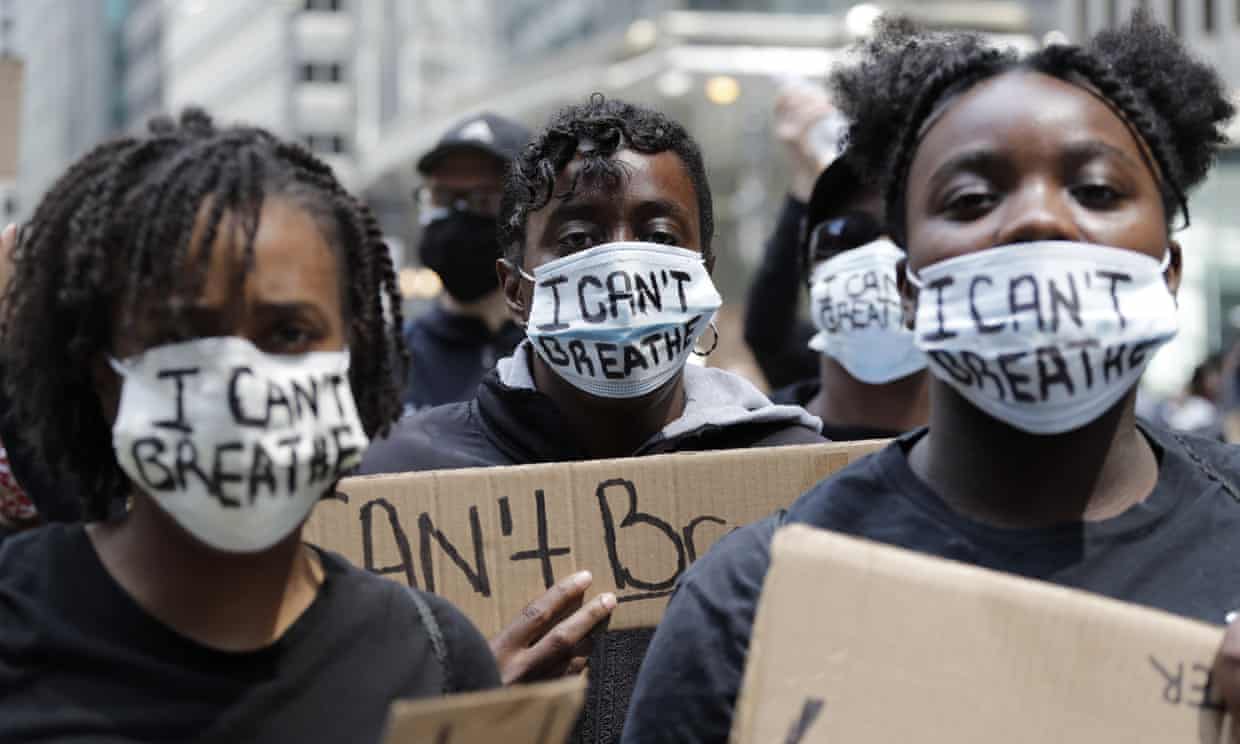As more and more businesses and chambers recognize the importance of a diverse community, workforce, and workplace, it is becoming common practice to communicate that understanding to stakeholders. Whether it’s a declaration of the value of diversity, or a promise to the community, members, employees, or the public to institute inclusive practices, statements such can help organizations hold themselves accountable.
All work on diversity, equity, and inclusion must start internally. For chambers to be seen as credible in this space, we need to look internally at our own staff and board. Chambers can take a variety of actions to focus on internal DEI, from providing training to evaluating policies and procedures. Chamber leaders should consider the best path forward for both chamber staff and the chamber board and how DEI can be integrated into all aspects of the chamber. Chambers should also consider the role their organizational culture plays in attracting and retaining more diverse staff members and creating an inclusive workplace.
Cincinnati USA Regional Chamber took an intentional approach in developing inclusion at its chamber and community and its 2016 strategic plan included an inclusion plan as its foundation. The directive reads, “We will model inclusion in everything we do,” with inclusion defined as “an intentional process through which differences are harnessed to create value.” The goal was to “exemplify inclusion through people, programs, practices, policy and partnerships.” Inclusivity became part of everyone’s job at the chamber. Find out more in the resources below.
The Greater Irving-Las Colinas Chamber of Commerce (TX) decided that it is vital that the board and staff reflect the diversity of the community. The chamber's 5-year Powering Progress Strategic Plan (2018-2023), promises to embrace diversity and develop a culture of inclusion to:
The chamber supports these promises through internal strategies:
The chamber's implementation of the Rooney Rule and Mansfield Rule 2.0, requiring a ratio of diverse candidates b e considered on the final hiring slate for a chamber position, has resulted in increases in diverse representation. The current staff makeup represents a minority-majority with 71% female and 57% minority staff. As described by President & CEO Beth Bowman:
e considered on the final hiring slate for a chamber position, has resulted in increases in diverse representation. The current staff makeup represents a minority-majority with 71% female and 57% minority staff. As described by President & CEO Beth Bowman:
Our organization began revising its Administration & Personnel Manual as early as March of 2019 to include a variation of these rules in our Equal Employment Opportunity clause. This policy has helped our organization be more deliberate and intentional about ensuring diversity in its hiring pool. Next steps will be to review Chamber job descriptions to ensure language is included that will elicit a diverse applicant pool.
Currently, our Equal Employment Opportunity clause states: “The Chamber provides equal employment opportunities to qualified persons without regard to race, color, national origin, ancestry, sex, sexual orientation, gender identity or expression, religion, age, pregnancy, status as a parent, disability (physical or mental), work-related injury, covered veteran status or military service, political ideology or affiliation, family medical history or genetic information, marital status, or any other non-merit based factors that the law protects from employment discrimination.
Our continued success depends heavily on the full and effective utilization of qualified persons. We strive to hire, develop, and retain the most qualified people we can find basing our judgment on each individual’s job-related qualifications, capabilities, and potential.
Our policies relate to all phases of employment, including advertising, recruitment, hiring, placement, promotion/demotion, training, transfer, layoff, recall, termination of employment, compensation and rates of pay, employee benefits (if provided to employees) and participation in all employer sponsored employee activities.
The President/CEO or the designated persons have the sole responsibility for hiring staff personnel required to conduct the business of the Chamber.
It is the policy of our organization to ensure a diverse pool of candidates are identified and considered for job openings. At least 20% of the final applicant pool must be women, LGBTQ+ or minority.
As directed by Powering Progress Strategic Plan (2018-2023), the chamber's DEI Committee supports the overall strategy of the organization to conduct intentional programming that fosters inclusion. The committee’s program of work includes opportunities to promote inclusion both internally and externally:
The chamber created a 12-month DEI Fellowship Program with the purpose of increasing opportunities for business leaders of diverse groups to serve on the Board of Directors and in other volunteer leadership capacities throughout the Irving-Las Colinas community. The program was inspired by ACCE’s Scholarship for Leadership Diversity. Over the course of the program, the fellows:
Boardsource asserts that "as the decision-making body at the highest level of organizational leadership, boards play a critical role in creating an organization that prioritizes, supports, and invests in diversity, inclusion, and equity." The organization goes on to state "that social sector organizations are better able to do this work effectively and with authenticity when they are led by boards that are intentionally diverse, inclusive, and focused on equity." Chamber board of directors are instrumental in the creation and implementation of the chamber’s mission and initiatives and can be intentionally designed to empower and entrust a diverse representation of the business community with its most important decisions.
With its commitment to representing the diversity of the community as described above, the Greater Irving-Las Colinas Chamber of Commerce (TX) is updating policy to include a comprehensive diversity strategy for their board nomination process. The chamber holds a rotating ex-officio board seat for minority community leaders and facilitates a DEI Fellowship. The purpose of the DEI Fellowship Program is "to increase opportunities for business leaders of diverse groups to serve on the Board of Directors for the Greater Irving-Las Colinas Chamber of Commerce and in other volunteer leadership capacities throughout the Irving-Las Colinas community."
The board is 36% female and 26% minority. This represents a 10% increase of minority representation on the board from the prior year and the chamber continues to work on improving representation through deliberate effort.
An ACCE DEI Division roundtable included a discussion on tokenism. In it, Dr. Nika White, Senior Advisor for Diversity and Inclusion Initiatives at Greenville Chamber of Commerce (SC), states that research shows a board should have 3 members of an underrepresented group in order for the influence of that population to be heard. Representation is imperative, however tokenism can serve to isolate board members. As explained in an NEO Law Group blog post:
If the Board is serious about DEI, it must set the tone at the top. When a nonprofit’s Board reflects the diversity of the community it serves, the organization will be better suited to serve that community and attract a diverse staff to implement its programs. Changing the composition of a Board can be very difficult; however, setting a goal through a provision in the Bylaws, whether aspirational or a specific, can tie the organization to said goal. Each organization should determine for itself what its Board diversity target is, how it plans to achieve it, when it plans to achieve it (e.g., 3 years? 5 years?), and by what method (e.g., set numbers, percentages). Admittedly, the following is an over-simplistic example, but if an organization’s goal is to increase representation of a certain group of individuals, they might include a provision in the Bylaws that states that Board must be made up of at least X% of that group within a stated time frame. Among the many challenges to discuss, carefully consider, and thoughtfully address are avoiding tokenism and ensuring any new directors have ample opportunities for meaningful contribution.
Your staff may be struggling, and it may be uncomfortable to have a conversation with them about racism and equity. We will not become more comfortable having conversations about race if we aren’t willing to be uncomfortable in the process. If needed, consider bringing in external facilitators or consultants to support the conversation.



Offer to buy each staff member a book on a topic related to racial inequity. Hold periodic meetings for staff to discuss and exchange the books, ideas, and resources they have discovered and encourage self-education on DEI topics.


:format(webp)/cdn.vox-cdn.com/uploads/chorus_image/image/65093088/9780525509288.0.jpeg)


Training will not solve systemic racism, but it is a start to creating a culture that supports equity and inclusion. Topics might include implicit bias, microaggressions, lessons on historic policies that have contributed to current inequities, or other topics. Connect with your local NAACP, United Way, and other community partners for training recommendations specific to your community and to support their work in DEI.
Our industry isn’t perfect, and some chambers have been on the wrong side of history when it comes to issues of equity, inclusion, and historic events. In order to move forward, we must be honest about our mistakes and reconcile that with our desire to be better moving forward.
After the Tulsa race massacre in 1921, the Tulsa Regional Chamber (OK) held meetings to discuss a response to the large-scale attack at the epicenter of the city’s largest black community. In 2019, the chamber released the minutes from these meetings and apologized for the failure by then-chamber leaders to confront the realities of white supremacy and their inaction that occurred nearly a century ago.


Chambers are natural conveners and leaders, but you don’t have to be at the center of every conversation. Identify community partners and others who are already embedded in this work, and ask them how the chamber can best support their efforts. It’s never too late to start conversations with organizations like the NAACP, Urban League, United Way, faith-based organizations, minority business owners, elected officials, and more.
Association of Chamber of Commerce Executives
1330 Braddock Place, Suite 300 | Alexandria, Virginia 22314
703-998-0072
©2019 | Privacy Statement | Disclaimer
Facebook Twitter Instagram